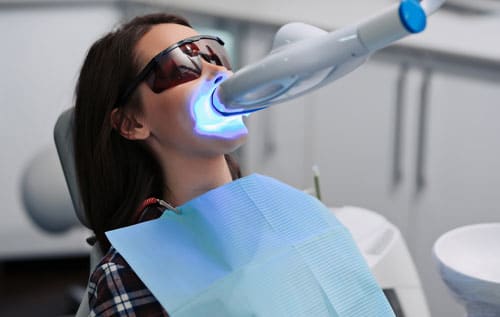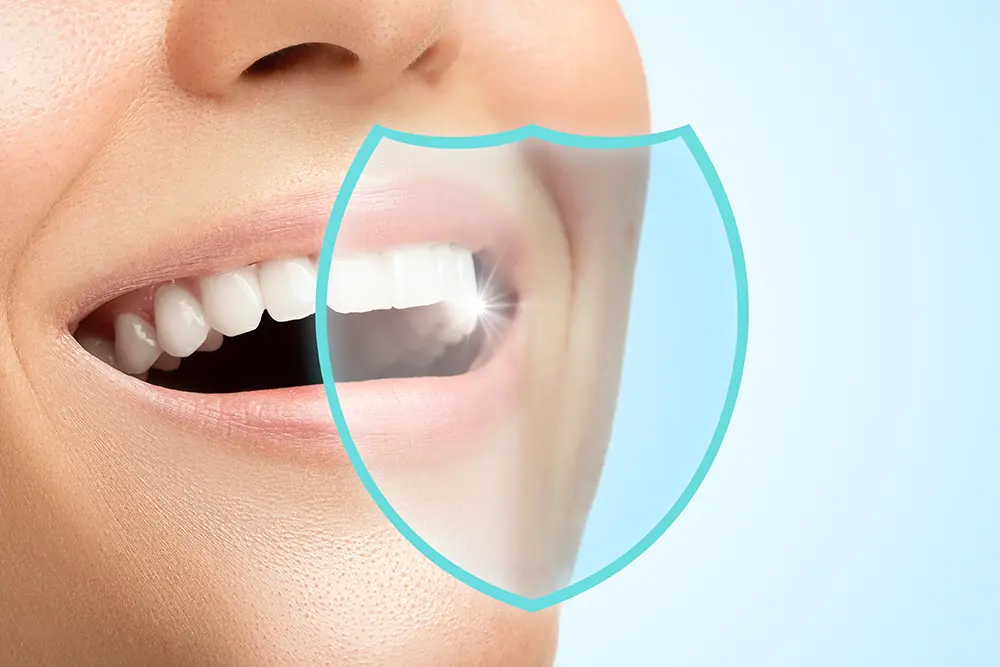I am a self-confessed coffee lover. I need a cup of coffee at home when I wake and my team knows to order me a cup when I get into work. As a Dentist, it is important to maintain my pearly white teeth, especially when I have to face my patients every day.
I personally do not have a problem with coffee stains despite a regular 2-3 cups a day (I know, I am an addict). Read on and I will share with you the secret to having your cake and eating it too; in this case, having your caffeine fix, and white teeth too.
How does coffee stain teeth?
The big culprits are tannins, and they are commonly found in drinks like coffee.
Tannins are a type of polyphenol that breaks down in the water. Tannins release coloured products that stick to rough surfaces on your teeth, causing yellow or brown discolouration. These stains are more likely to stick especially if you have plaque present on the tooth surface.
How do I remove coffee stains from teeth?
The good news is that these teeth stains are mostly external and not permanent. In the strong coffee club culture today, where meetings and social gatherings are done over a cup of coffee, steering away from coffee can prove difficult. If you are a heavy coffee drinker as I am, here are some of the ways I maintain my teeth bright and shiny.
1. Duration of the coffee drink
Do not constantly sip your coffee throughout the day. Have your cup and your caffeine fix in one sitting vs nursing a cup over the day. Do take sips of water between your cup of coffee if you are taking it over a prolonged period, otherwise, it would be good to rinse with water after the drink. Wait half an hour to brush, so that the acids are neutralised. Otherwise, you might be spreading the acid all over your teeth. Acid erosion takes away the enamel layer, causing the internal dentine layer to show through. Dentine is yellow, and that can in turn cause more tooth discoloration.
2. Avoid direct coffee contact with teeth
Consider using a straw. Drinking coffee through a straw can help prevent it from having direct contact with your teeth, thus reducing the risk of stains.
3. Brushing
Have a good home care routine in place. Brush your teeth twice a day as instructed by your dentist. Rinse or brush after lunch if you had a cup of coffee, but do wait 30 minutes to brush. You can also use whitening toothpaste to help remove some of the coffee stains, but it should be used with care. These toothpastes contain abrasive particles. Overuse or use with a hard bristle toothbrush can cause unnecessary loss of the outer tooth layer through attrition, causing teeth to appear more yellow.
4. Flossing
Floss every night. This would also help prevent calculus from accumulating. Calculus is hardened plaque and tends to gather around the gaps between teeth and along the gum line. Calculus is very rough and can absorb stains easily.
5. Regular Dental Visits
Most importantly, do visit us every 6 months to have a professional dental cleaning done. Calculus can only be removed by our professional tools safely. Polishing is also done to remove all the stains caused by coffee.
6. Teeth Whitening
This is my all-time favourite and my main weapon in my “white teeth” toolbox.
Teeth whitening is very safe and non-invasive. The teeth whitening gel is of neutral pH and does not damage or “eat away” tooth structure.
There are 2 available options for teeth whitening.

Take-Home Teeth Whitening
This can be done in the comfort of your home and results can be seen in 7 to 10 days.

Zoom Chairside Teeth Whitening
This teeth whitening process is done in the clinic by our dentist. You can achieve a whiter smile in a single session of about 75 minutes while watching our overhead TV.
I like to whiten my teeth once a year with Zoom chairside teeth whitening, and I maintain my brightened smile every 3 months over 3 days, with the take-home teeth whitening kit. The take-home teeth whitening kit can also be used to replace the Zoom chairside teeth whitening procedure. Simply wear the teeth whitening trays with whitening gel, over 15 minutes a day, or to sleep over 7-10 consecutive days for similar results.
The teeth whitening process uses active ingredients to temporarily open pores in your teeth and lift stains. After each whitening session, your teeth will naturally remineralize and rehydrate. While the pores are temporarily opened, it would be best to avoid coffee and any other food or beverages that can heavily stain a white shirt. This would help to maximise the whitening results achieved.
I would advise patients to avoid coffee 48 hours post-Zoom Chairside teeth whitening and during the period of the home whitening. Use a straw if you need a caffeine fix.

Can you still drink coffee?
Of course! Even when the drink we love so much can cause yellowing to our pearly white teeth, you are now equipped with the above knowledge to do what you can to allow your teeth to stay healthy and bright while enjoying the drink to the fullest. YOLO!
FAQs
Good oral hygiene practice but the only way to remove stains thoroughly is to see the dental professional.
Stains can be categorised as internal and external.
- Internal stains are caused by dental decay, a non-vital tooth or previous Root canal treatment (RCT), fluorosis or tetracycline staining – Generally cannot be whitened. The stains are permanent, but various treatment options are available to whiten the teeth.
- External and can be caused by coloured food, beverages such as coffee, red wine and from smoking. These stains can be prevented by good oral hygiene practices, rinsing after taking a coloured drink or routine scaling and polishing. The underlying colour of the tooth can brighten with teeth whitening. These stains are not permanent.
Good oral hygiene practice. Such as;
- brushing twice a day
- floss at night
- rinse after taking coffee or red wine and brushing teeth 30 minutes after so that acids are neutralised.
You can also prevent stains with whitening toothpaste. Proper tooth brushing techniques are essential. Charcoal toothpaste is not proven to be effective. As the toothpaste is abrasive, it can cause excessive wear of the tooth surface.
You can use a wet terry cloth with a bit of baking soda to remove localised areas of stains. However, this should be used with caution, as excessive use strips the tooth enamel.





